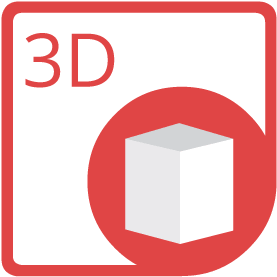
Convert JT to GLTF via Java
JT to GLTF conversion using Java library without any 3D modeling software.
How to Convert JT to GLTF Using Java
In order to render JT to GLTF, we’ll use
API which is a feature-rich, powerful and easy to use conversion API for Java platform. You can download its latest version directly from
and install it within your Maven-based project by adding the following configurations to the pom.xml.
Repository
<repository>
<id>AsposeJavaAPI</id>
<name>Aspose Java API</name>
<url>https://repository.aspose.com/repo/</url>
</repository>
Dependency
<dependency>
<groupId>com.aspose</groupId>
<artifactId>aspose-3d</artifactId>
<version>version of aspose-3d API</version>
<classifier>jdk17</classifier>
</dependency>
Steps to Convert JT to GLTF via Java
Java programmers can easily convert JT file to GLTF in just a few lines of code.
- Load JT file via the constructor of Scene class
- Create an instance of GltfSaveOptions
- Set GLTF specific properties for advanced conversion
- Call Scene.save method
- Pass the output path with GLTF file extension & object of GltfSaveOptions
System Requirements
Before running the Java conversion code, make sure that you have the following prerequisites.
- Microsoft Windows or a compatible OS with Java Runtime Environment for JSP/JSF Application and Desktop Applications.
- Get latest version of Aspose.3D for Java directly from Maven.
Java 3D Scene Manipulation Library
Aspose.3D is a CAD and Gameware API to load, modify and convert 3D files. API is a standalone and does not require any any 3D modeling or rendering software. One can easily use API for Discreet3DS, WavefrontOBJ, STL (ASCII, Binary), Universal3D, FBX (ASCII, Binary), Collada, glTF, PLY, GLB, DirectX and more formats.JT What is JT File Format?
JT (Jupiter Tessellation) is an efficient, industry-focused and flexible ISO-standardized 3D data format developed by Siemens PLM Software. Mechanical CAD domains of Aerospace, automotive industry, and Heavy Equipment use JT as their most leading 3D visualization format. JT format is a scene graph that supports the attributes and nodes that are CAD specific. Sophisticated compression techniques are used to store facet data (triangles). This format is structured to support visual attributes, product and manufacturing information (PMI), and Metadata. There is a good support for asynchronous streaming of content. In heavy mechanical industry, professionals use JT file in their CAD solutions and product lifecycle management (PLM) software programs to examine the geometry of complicated goods.
Read MoreGLTF What is GLTF File Format?
glTF (GL Transmission Format) is a 3D file format that stores 3D model information in JSON format. The use of JSON minimizes both the size of 3D assets and the runtime processing needed to unpack and use those assets. It was adopted for the efficient transmission and loading of 3D scenes and models by applications. glTF was developed by the Khronos Group 3D Formats Working Group and is also described as JPEG of 3D by its creators. The format defines an extensible, common publishing format for 3D content tools and services that streamlines authoring workflows and enables interoperable use of content across the industry. The intention behind the creation of glTF file format was to define an extensible, common publishing format for 3D content tools and services that should streamline authoring workflows and enable interoperable use of content across the industry. It minimizes runtime processing by applications using WebGL and other APIs.
Read MoreOther Supported Conversions
You can also convert JT into many other file formats including few listed below.